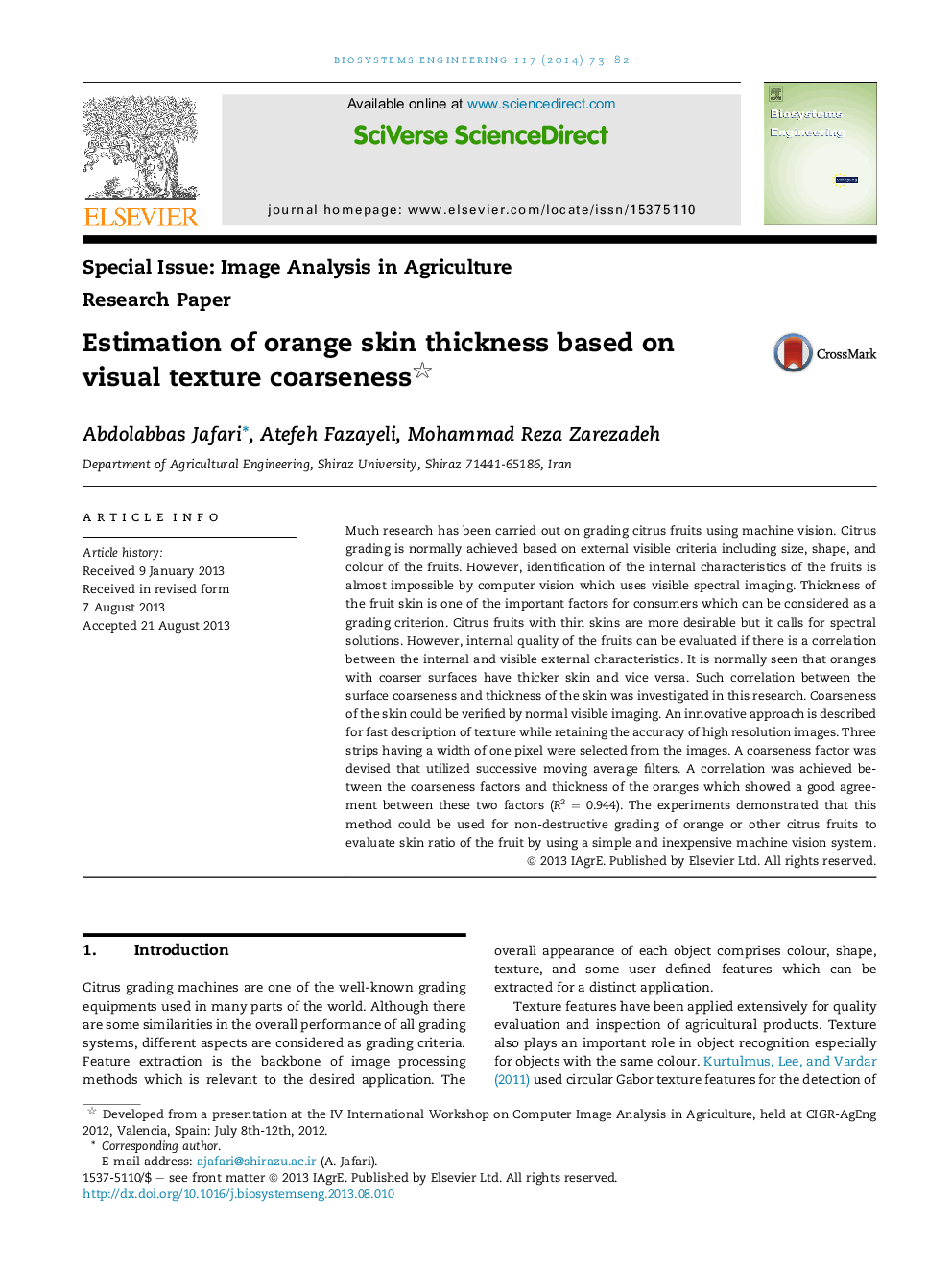| Article ID | Journal | Published Year | Pages | File Type |
|---|---|---|---|---|
| 1711260 | Biosystems Engineering | 2014 | 10 Pages |
•Innovative coarseness descriptor was introduced for images processing.•Skin thickness of the orange samples was correlated to the coarseness factor.•Solution to exclude the stylar end and abscission zone of orange was defined.•Directional lighting significantly enhances coarseness description.•Skin thickness estimation is possible based on coarseness factor of skin image.
Much research has been carried out on grading citrus fruits using machine vision. Citrus grading is normally achieved based on external visible criteria including size, shape, and colour of the fruits. However, identification of the internal characteristics of the fruits is almost impossible by computer vision which uses visible spectral imaging. Thickness of the fruit skin is one of the important factors for consumers which can be considered as a grading criterion. Citrus fruits with thin skins are more desirable but it calls for spectral solutions. However, internal quality of the fruits can be evaluated if there is a correlation between the internal and visible external characteristics. It is normally seen that oranges with coarser surfaces have thicker skin and vice versa. Such correlation between the surface coarseness and thickness of the skin was investigated in this research. Coarseness of the skin could be verified by normal visible imaging. An innovative approach is described for fast description of texture while retaining the accuracy of high resolution images. Three strips having a width of one pixel were selected from the images. A coarseness factor was devised that utilized successive moving average filters. A correlation was achieved between the coarseness factors and thickness of the oranges which showed a good agreement between these two factors (R2 = 0.944). The experiments demonstrated that this method could be used for non-destructive grading of orange or other citrus fruits to evaluate skin ratio of the fruit by using a simple and inexpensive machine vision system.
